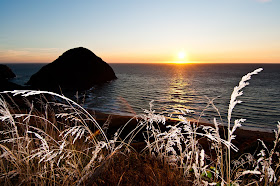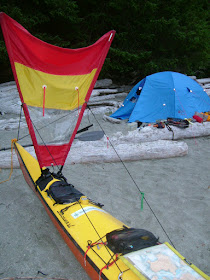 |
| Spinosaurus, Fukui Prefectural Dinosaur Museum |
Egypt is often celebrated for its pyramids and pharaohs, but beneath those golden sands lies a much older and equally astonishing legacy — the fossil record of a land that has shifted from lush tropical forests to inland seas and back again.
From the Western Desert to the Fayum Depression and Wadi Al-Hitan (the Valley of the Whales), Egypt’s rocks preserve nearly 100 million years of life on Earth, from the Cretaceous dinosaurs that roamed its river plains to the Eocene whales that swam through the Tethys Ocean.
Over the past few posts, we've looked at the geological wonders of Egypt. Here is a deeper look at some of the many interesting fossil species to be found in this rich paleontological playground.
Petrified Wood — A Forest Turned to Stone
Across Egypt’s deserts, the ground often glitters with fossilized trees. The Petrified Wood Protectorate near New Cairo, along the Cairo–Suez road, and wide stretches of the Western Desert are carpeted in ancient trunks and branches turned to stone.
These fossil forests are vivid evidence that much of Egypt was once a humid, tropical landscape, rich with vegetation. The trees, buried in sediments and permineralized over millions of years, became exquisitely preserved in silica. Today, their polished cross-sections shimmer with bands of reds, browns, and golds — a striking reminder of the region’s deep ecological transformations.
Reptiles of the Fayum — Turtles, Crocodiles, and Giants — The Fayum Depression has yielded a wealth of Eocene reptile fossils that speak of a warm, watery world teeming with life. Land tortoises like Testudo ammon roamed the ancient floodplains, while river turtles such as Podocnemis blanckenhorni and Stereogenys pelomedusa swam through slow-moving channels.
Even more dramatic are the remains of Gigantophis, one of the largest snakes ever discovered, and Tomistoma, a crocodile-like predator from the Qasr al-Sagha Formation. These reptiles hint at an ecosystem that blended mangroves, lagoons, and river deltas — a mosaic of habitats where both freshwater and marine species thrived.
Birds of an Ancient Delta — The Fayum’s fossil beds also record an impressive diversity of Eocene and Oligocene birdlife. The ancient wetlands once supported ospreys (Pandionidae), flamingos (Phoenicopteridae), herons, cranes (Gruidae), cormorants (Phalacrocoracidae), and even the massive shoebilled stork (Balaenicipitidae).
These avian fossils, comparable to species found today around Lake Victoria and the Upper Nile, suggest a vibrant, subtropical ecosystem rich in lakes and marshes — a far cry from the arid desert we see today.
Mammals of the Fayum — Whales, Elephants, and Early Primates
The mammalian fossils of Egypt are among the most extraordinary in the world. In the Fayum Depression and at Wadi Al-Hitan, paleontologists have uncovered a sweeping record of evolution from land to sea and from primitive mammals to the ancestors of modern species.
At Wadi Al-Hitan, skeletons of early whales — Basilosaurus isis, Dorudon atrox, and Phiomicetus — preserve a pivotal evolutionary moment when whales transitioned from walking on land to swimming in the sea. Their long, streamlined bodies and tiny hind limbs are beautiful testaments to nature’s adaptability.
Meanwhile, the terrestrial Fayum deposits reveal a menagerie of early mammals:
- Arsinoitherium, a massive, rhinoceros-like creature with twin horns;
- Moeritherium, a semi-aquatic ancestor of elephants and manatees;
- Palaeomastodon and Phioma, early proboscideans bridging the gap to modern elephants;
- and Megalohyrax, a giant relative of today’s small hyrax.
Carnivorous mammals also prowled these Eocene landscapes — species like Apterodon, Pterodon, and Hyaenodon, formidable predators of their time.
The Fayum Primates — Our Ancient Cousins — Among the Fayum’s most scientifically valuable discoveries are the fossils of early primates, bridging the gap between ancient prosimians and modern monkeys and apes.
From the lower sequence, we find forms like Oligopithecus savagei and Qatrania wingi, while the upper sequence preserves Catopithecus browni, Proteopithecus sylvia, and the well-known Apidium and Parapithecus species.
Perhaps most famous is Aegyptopithecus zeuxis, a small tree-dwelling primate with forward-facing eyes and a relatively large brain. It is often cited as one of the earliest known ancestors of modern Old World monkeys and apes — and, by extension, of humans.
These fossils from the Jebel Qatrani Formation provide an unparalleled window into primate evolution roughly 35 to 30 million years ago, when Africa’s tropical forests were home to our distant kin.
Dinosaurs of the Cretaceous Desert — Long before the whales and primates, Egypt’s landscape was dominated by Cretaceous dinosaurs. The Bahariya Formation and Nubian Sandstone have yielded fossils of immense sauropods and ferocious theropods, painting a vivid picture of life 95 million years ago.
Among the stars of this ancient cast are:
- The long-necked Aegyptosaurus and Paralititan, massive plant-eating sauropods;
- The sleek, predatory Bahariasaurus, Carcharodontosaurus, and Deltadromeus;
- The semi-aquatic Spinosaurus, with its iconic sail-backed spine — perhaps one of the most famous dinosaurs to ever emerge from African rock; and Mansourasaurus, a titanosaur discovered more recently, helping to link Africa’s late Cretaceous fauna with those of Europe and Asia.
These finds demonstrate that Egypt was once a fertile delta world of rivers and floodplains, where dinosaurs thrived long before the Sahara turned to sand.
Egypt’s Fossil Sites — Portals Through Time — Key fossil localities across the country continue to reveal Egypt’s ancient ecosystems:
- Wadi Al-Hitan — Eocene marine fossils, including whales and sea cows.
- Fayum Depression — rich terrestrial and freshwater deposits with early mammals and primates.
- Bahariya Formation — famous for Cretaceous dinosaurs and early vertebrates.
- Jebel Qatrani Formation — Oligocene primates and proboscideans.
- Qasr el Sagha Formation — reptiles, turtles, and early crocodilians.
- Upper Cretaceous Phosphates and Variegated Shale — marine invertebrates and early fish.
- Moghra Oasis — Miocene fossils bridging the gap between ancient and modern fauna.
- Queseir Formation — Upper Cretaceous (Campanian) deposit in the Kharga oasis of the Southwestern Desert where the first side-necked turtle Khargachelys caironensis can be found
Egypt’s fossils offer a spectacular narrative of evolution, climate, and change — from swampy Cretaceous river deltas to lush Eocene seas and forests, to the deserts we see today.
Each discovery connects the story of Earth’s deep past with the land of the Pharaohs, revealing that Egypt’s most enduring monuments are not her pyramids, nor her simple blocks of stone, but the fossils buried them
Image Credit: Spinosaurus at the special exhibit of Fukui Prefectural Dinosaur Museum by Palaeotaku CC BY 4.0









.png)

.png)





































